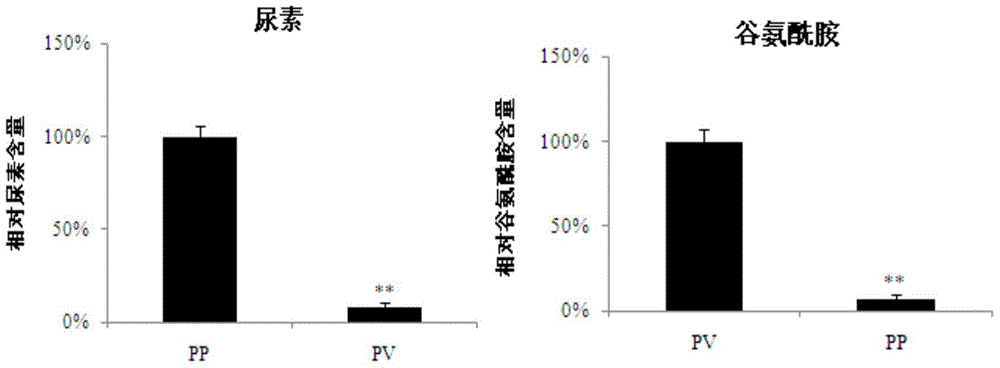Separation method and application of hepatic cells peripheral to pig portal veins or hepatic cells peripheral to hepatic veins
A technology of liver cells and portal vein, which is applied in the field of separation of liver cells around pig portal vein or liver cells around hepatic vein, to achieve the effect of improving cell viability
- Summary
- Abstract
- Description
- Claims
- Application Information
AI Technical Summary
Problems solved by technology
Method used
Image
Examples
Embodiment 1
[0038] A method for separating liver cells around the pig portal vein, comprising the following steps:
[0039] 1) The distal hepatic end of the posterior vena cava of the fresh pig liver was ligated, and a portal vein catheter was installed. Use perfusion solution A preheated at 37°C, perfuse from the portal vein at a rate of 35ml / min, and continue perfusing until the cannula near the hepatic end of the posterior vena cava is successfully installed;
[0040] Described fresh pork liver is piglet fresh pork liver;
[0041] The specific formula of described perfusion solution A comprises: 6.9g / L sodium chloride, 0.35g / L potassium chloride, 0.28g / L calcium chloride, 0.14g / L magnesium sulfate, 0.27g / L potassium dihydrogen phosphate , 2.1g / L sodium bicarbonate, 2.0g / L glucose, adjust the pH to 7.4, filter and sterilize with a 0.22μm microporous membrane, and store at 4°C after aliquoting.
[0042] 2) Separation and perfusion of hepatocytes around the portal vein: Use perfusion so...
Embodiment 2
[0054] A method for isolating hepatocytes around pig liver veins, comprising the following steps:
[0055] 1) The distal hepatic end of the posterior vena cava of the fresh pig liver was ligated, and a portal vein catheter was installed. Use perfusion solution A preheated at 37°C, perfuse from the portal vein at a rate of 35ml / min, and continue perfusing until the cannula near the hepatic end of the posterior vena cava is successfully installed;
[0056] Described fresh pork liver is piglet fresh pork liver;
[0057] 2) Separation and perfusion of hepatic cells around the hepatic vein: use preheated perfusion solution A1 at 37°C to perfuse from the portal vein at a rate of 10ml / min, and stop perfusion until a uniform white network appears on the surface of the liver; after 10s, From the posterior vena cava, perfuse with perfusion solution B1 preheated at 37°C at a rate of 50ml / min for 10-15min, until the fluid outflowing from the portal vein becomes clear;
[0058] 3) Separa...
Embodiment 3
[0064] Detection of cell viability:
[0065] The single cell suspension resuspended in the basal medium obtained in Example 1 and Example 2 was mixed with 0.4% trypan blue staining solution at a volume ratio of 1:1, and 20 μL of the mixed solution was quickly added to a hemocytometer ( purchased from Shanghai Qiujing Biochemical Reagent Instrument Co., Ltd.) and covered with a coverslip. Place it under an inverted microscope to count the number of dead cells and living cells, and calculate the cell viability (dead cells can be stained with trypan blue and appear dark blue under the microscope, live cells are not stained and appear colorless and transparent under the microscope) and Cell density. The specific preparation method of the 0.4% trypan blue staining solution is as follows: weigh 0.4 g of trypan blue solid and dissolve it in 100 ml of PBS buffer.
[0066] By the method described in Example 1 or Example 2, the number of living cells of the isolated cells was 4.5×10 ...
PUM
 Login to View More
Login to View More Abstract
Description
Claims
Application Information
 Login to View More
Login to View More - R&D
- Intellectual Property
- Life Sciences
- Materials
- Tech Scout
- Unparalleled Data Quality
- Higher Quality Content
- 60% Fewer Hallucinations
Browse by: Latest US Patents, China's latest patents, Technical Efficacy Thesaurus, Application Domain, Technology Topic, Popular Technical Reports.
© 2025 PatSnap. All rights reserved.Legal|Privacy policy|Modern Slavery Act Transparency Statement|Sitemap|About US| Contact US: help@patsnap.com


